In today’s digital world, websites are often the first point of contact between a business and its customers.
A website that is warm, welcoming, and relatable can help to build trust with customers and create a more positive user experience.
Humanizing your website can have a big impact on the way that customers perceive your brand, and can help to establish a personal connection with your audience.
Why humanize your website?
There are several reasons why humanizing your website is a good idea:
- Improving the user experience: A website that is friendly, relatable, and easy to understand can help to create a positive user experience for your customers. By using conversational language and avoiding technical jargon, you can make your website more accessible and engaging for your audience.
- Building credibility: By including photos of real people, sharing customer stories and testimonials, and providing live chat support, you can help to establish credibility with your audience and build trust with your customers.
- Creating a personal connection: By adding a personal touch to your website, such as a message from a representative of your company, you can help to create a more personal connection with your audience and demonstrate a genuine interest in connecting with them.
- Differentiating your brand: By humanizing your website, you can help to differentiate your brand from your competitors and make it more memorable to your audience.
How to humanize your website
There are several steps that you can take to humanize your website:
- Use conversational language
- Include photos of real people
- Add a personal touch
- Use humor
- Provide live chat support
- Share stories and testimonials
- Use video content
Use conversational language
Using conversational language on your website can help to create a more personal and friendly tone, making your brand more relatable and approachable to your audience.
The language you use can have a big impact on the way that customers perceive your brand, so it’s important to choose words and phrases that are easy to understand and that don’t alienate your audience.
Websites that use conversational language effectively include:
Mailchimp: Mailchimp uses a friendly, conversational tone in its website copy, making it easy for users to understand and engage with the brand. The use of humor and casual language makes the brand feel approachable and relatable.
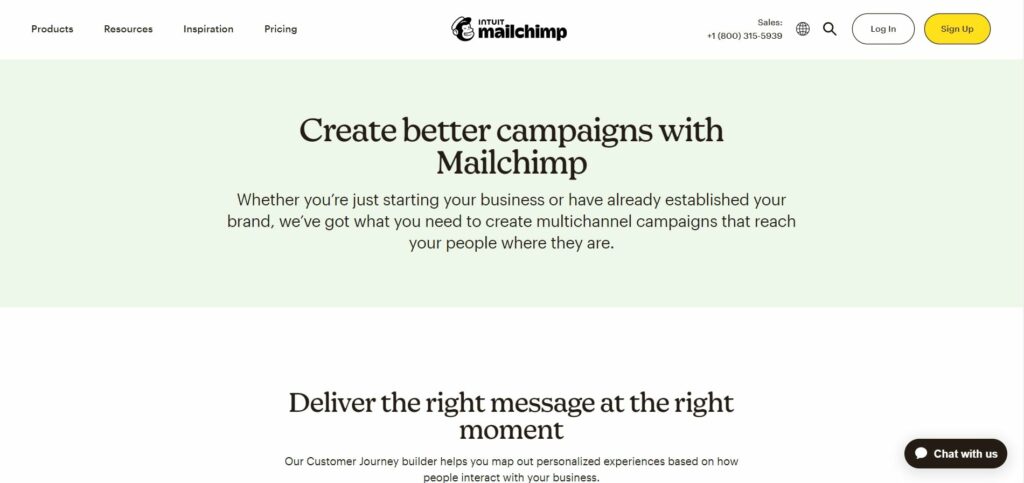
Slack: Slack’s website uses a casual and friendly tone, making it easy for users to understand how the platform works. The language is straightforward and relatable, making it easy for users to connect with the brand.

In conclusion, using conversational language on your website can help to create a positive user experience and build a connection with your audience. By writing in a tone that is friendly, relatable, and easy to understand, you can help to establish credibility with your customers and make your brand more memorable. Avoid using technical jargon or complex language, as this can make your brand feel inaccessible and unapproachable to your audience.
Include photos of real people
Including photos of real people on your website can help to humanize your brand and create a more personal connection with your audience. People are naturally drawn to other people, and by featuring real people on your website, you can help to create a sense of trust and familiarity with your customers.
Examples of websites that use photos of real people effectively include:
Squarespace: Squarespace, a website builder, uses photos of real people on its website to help customers understand the benefits of its platform. By featuring real customers, Squarespace makes its brand feel approachable and relatable.

Hubspot: Hubspot, a marketing, sales, and service platform, uses photos of its employees and customers on its website to create a personal connection with its audience. By featuring real people using its platform, Hubspot makes its brand feel friendly and trustworthy, helping to build credibility with its customers.
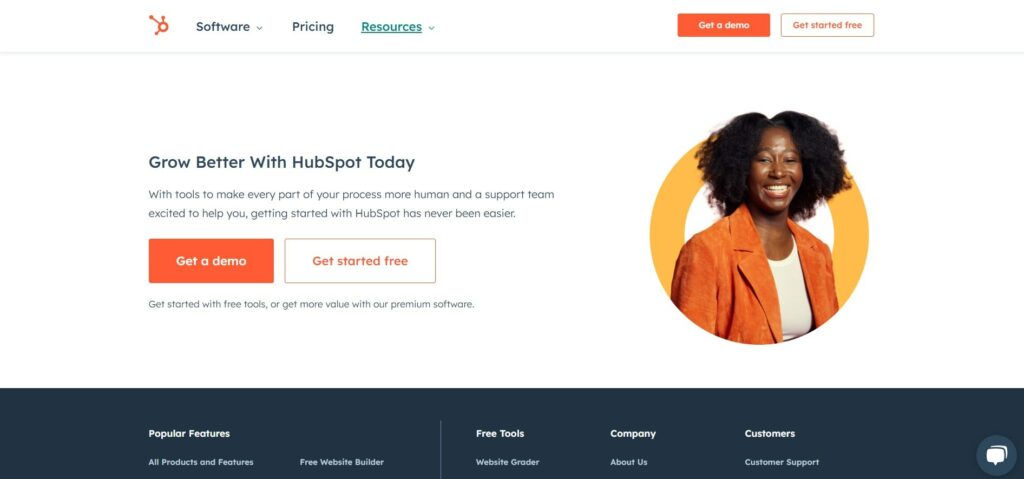
Mention: Mention, a media monitoring and analysis tool, uses photos of its team members on its website to create a personal connection with its audience. By featuring real employees and showcasing the people behind the brand, Mention makes its brand feel approachable and trustworthy, helping to build credibility with its customers. This personal touch helps customers feel more connected to the brand and more confident in the services offered.

In conclusion, including photos of real people on your website can help to humanize your brand and create a personal connection with your audience.
By featuring real customers, employees, or even pets, you can help to make your brand feel approachable, trustworthy, and relatable.
This can have a big impact on the way that customers perceive your brand, and can help to build credibility and establish a personal connection with your audience.
Add a personal touch
Adding a personal touch to your website can help to humanize your brand and create a genuine connection with your audience. This can include a personal message from a representative of your company, such as the CEO or founder, that provides a human face to the brand and demonstrates a genuine interest in connecting with your audience.
Examples of websites that add a personal touch effectively include:
Basecamp: Basecamp, a project management tool, includes a personal message from its co-founder on its website to connect with its audience. The message is friendly and relatable, and provides a human face to the brand.

FreshBooks: FreshBooks, a cloud-based accounting software, includes a personal message from the founder and CEO, Mike McDerment, on their website’s about page. The message shares his vision for the company and the story behind its creation, providing a human face to the brand.
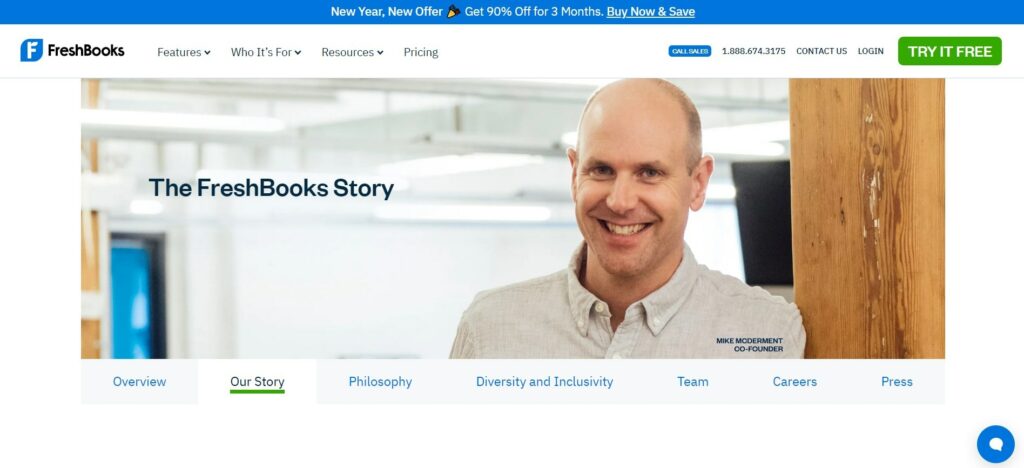
Wistia: Wistia, a video hosting and analytics platform, has a section on their website called “Meet the Wistia Team” where visitors can get to know the team members behind the company. This personal touch helps visitors feel like they’re connecting with real people, rather than just a faceless brand.

In conclusion, adding a personal touch to your website can help to humanize your brand and create a genuine connection with your audience. By including a personal message from a representative of your company, you can demonstrate a genuine interest in connecting with your audience and provide a human face to the brand. This can help to build credibility, establish trust, and create a memorable and positive user experience for your customers.
Use humor
Using humor on your website can be a great way to humanize your brand and create a positive and memorable experience for your audience. Humor can help to break down barriers and make your brand feel more relatable and approachable.
Examples of websites that add a personal touch effectively include:
Zapier: Zapier is a platform that helps users automate tasks between different web applications. The company uses humor in its branding and marketing efforts, such as incorporating humor into its blog posts and social media content, to create a memorable and positive brand experience for its customers.
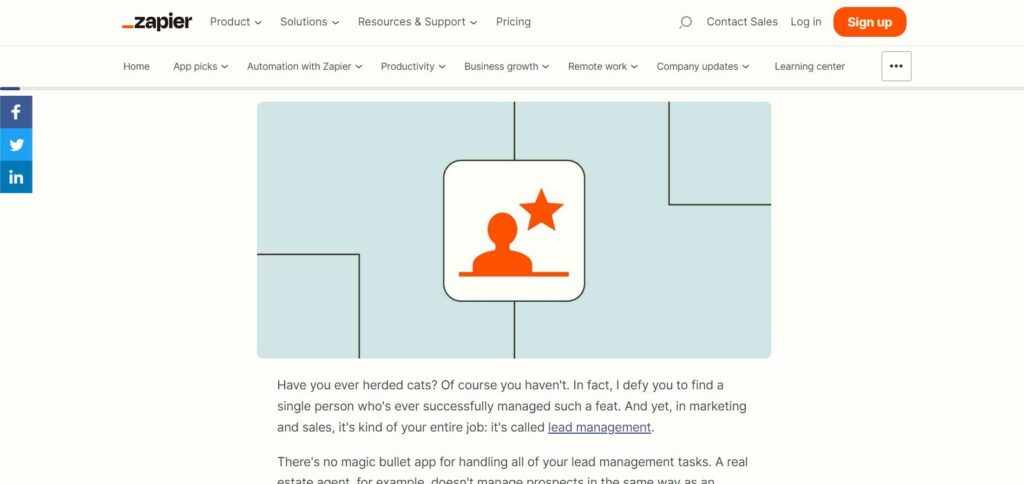
Asana: Asana is a project management and collaboration platform that uses humor in its branding and marketing efforts. The company incorporates humor into its customer support interactions and its marketing content, such as its blog and social media posts, to create a memorable and positive brand experience for its customers.

In conclusion, using humor on your website can be a powerful tool in humanizing your brand and creating a memorable experience for your audience.
Humor can help to break down barriers, make your brand feel more relatable and approachable, and create a positive and memorable brand experience for your customers.
Just be careful to use humor in a way that aligns with your brand values and doesn’t offend your audience.
When done well, humor can be a fun and effective way to connect with your audience and build a strong, memorable brand.
Provide live chat support
Providing live chat support is an effective way to humanize a website by allowing customers to connect with a real person in real-time.
This type of support can help build trust and credibility with your customers, as they are able to receive immediate and personalized assistance with their questions or concerns.
Some examples of websites that use live chat support to humanize their brand include:
Zendesk: Zendesk is a customer service platform that offers live chat support as one of its core features. Customers are able to connect with a real person in real-time to receive immediate assistance with their questions or concerns.
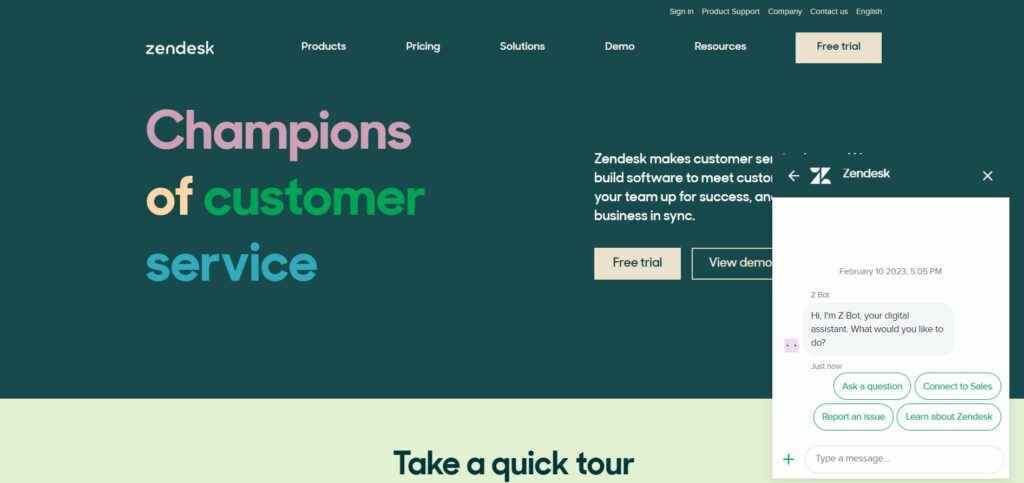
Intercom: Intercom is a customer communication platform that offers live chat support as one of its key features. This allows the company to connect with its customers in real-time, providing them with personalized support and assistance as they need it.

Whether you’re a small business or a large enterprise, offering live chat support can help you connect with your customers, build trust, and provide a more human touch to your brand.
Share stories and testimonials
Sharing stories and testimonials from real customers is a powerful way to humanize a website and establish credibility with your audience. By showcasing real-life examples of how your products or services have helped others, you can demonstrate the impact and value of your brand and build trust with potential customers.
Here are a few examples of websites that effectively use stories and testimonials to humanize their brand:
Shopify: Shopify, an e-commerce platform, features customer success stories on its website to showcase the impact that its platform has had on businesses of all sizes. These stories help to humanize the brand, demonstrate the value of its services, and build credibility with potential customers.
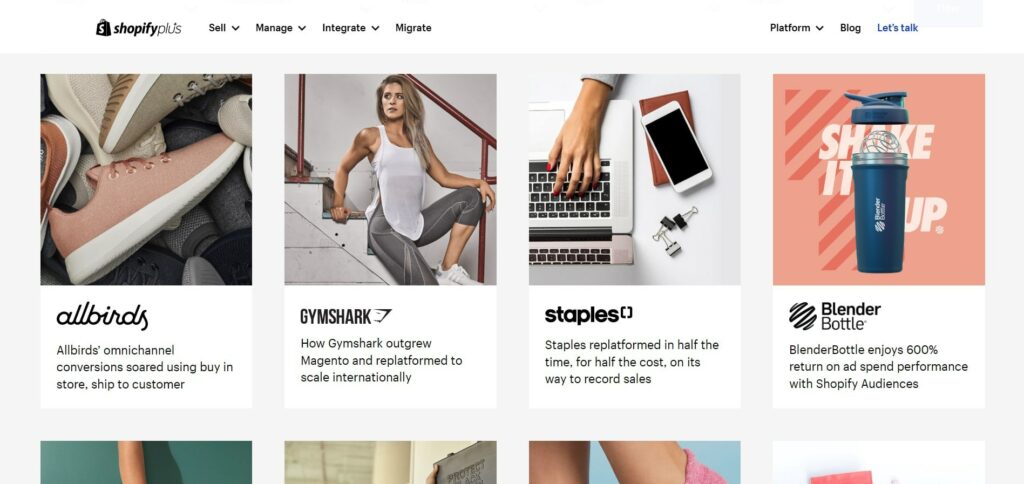
Salesforce: Salesforce, a customer relationship management platform, features customer success stories on its website that showcase the impact its platform has had on various businesses. These stories help to demonstrate the value of Salesforce and build credibility with potential customers.
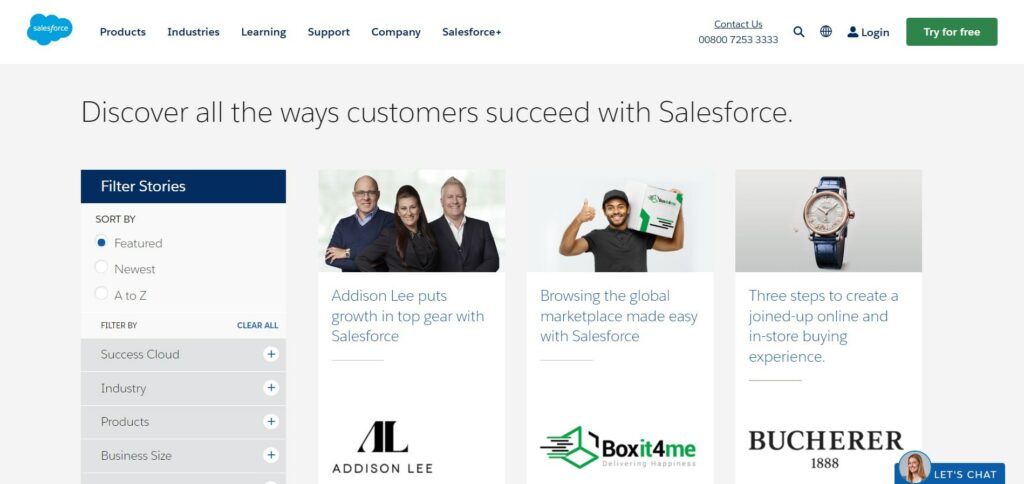
Zoom: Zoom, a video conferencing platform, features customer success stories on its website that showcase the impact its platform has had on various businesses and organizations. These stories help to demonstrate the value of Zoom and build credibility with potential customers.
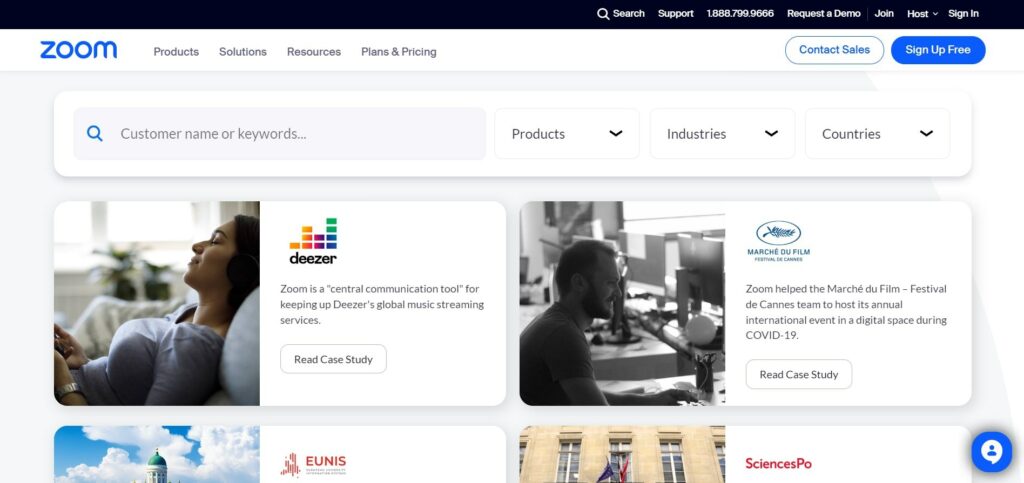
By sharing stories and testimonials from real customers, you can help to humanize your website and build credibility with your audience. This can help to establish a stronger connection with your customers and build trust in your brand, leading to increased engagement, conversions, and customer loyalty.
Use video content
Video content is a highly engaging and effective way to bring a human touch to your website. It helps to humanize your brand by showcasing real people and real-life situations that your audience can relate to.
Here are a few examples of websites that effectively use video content to bring a human touch to their online presence:
Wistia: Wistia, a video hosting platform that allows businesses to host, manage, and share their videos. They use video content on their website to showcase their product, provide tutorials and customer testimonials, and share their company culture.
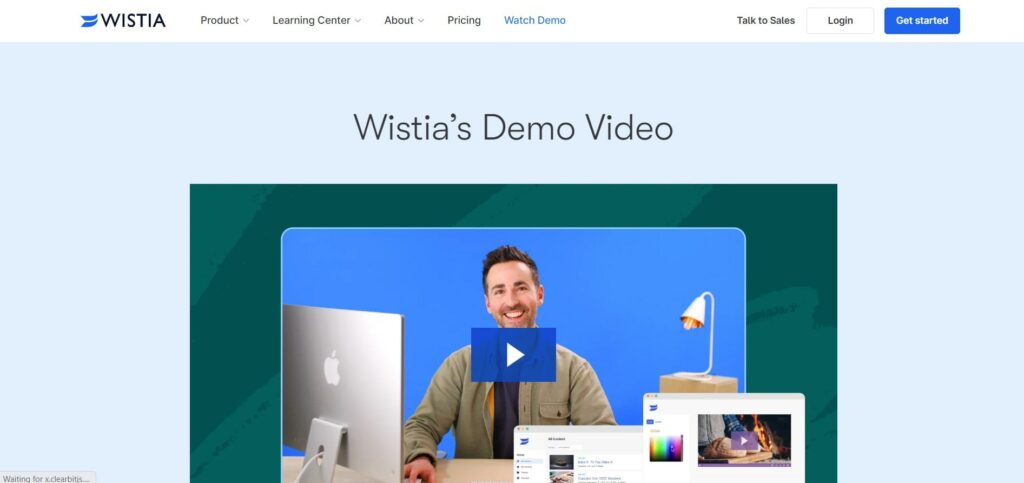
Buffer: Buffer, a social media management software that helps businesses manage their social media presence. They use video content on their website to introduce their team members, share company updates, and showcase their product.

By using video content, these websites are able to bring a human touch to their online presence and make their brands more relatable and memorable to their audiences. Video content can also help to build trust and credibility with your audience by showcasing real people using your products and services.
Tools and platforms to humanize your website
Utilizing tools and platforms is another way to bring a human element to your website. There are several tools and platforms available that can help you achieve this, such as:
Conversational AI platforms: These platforms allow you to add chatbots to your website, which can provide instant answers to your customer’s questions and help guide them through the buying process.
Examples of popular conversational AI platforms include:
- Intercom
- Drift
- Tawk.to
- Hubspot’s Conversational AI
- Landbot
- LiveChat
Video hosting platforms: Platforms like YouTube and Vimeo allow you to host and share video content, making it easy to add video content to your website and reach a wider audience.
Examples of popular video hosting platforms include:
- YouTube
- Vimeo
- Wistia
- Brightcove
- JW Player
- Kaltura
- Dailymotion
Personalization software: Personalization software, such as Optimizely, allows you to tailor the content and experience of your website to each individual visitor, helping to create a more personal connection with your audience.
Examples of popular personalization software include:
- Optimizely
- Monetate
- Dynamic Yield
- Qubit
Landing page builders: Landing page builders, such as Unbounce and Leadpages, allow you to easily create custom landing pages for your website, which can help to streamline the user experience and provide a more human touch.
Examples of popular landing page builders include:
- Unbounce
- Leadpages
- Instapage
- GetResponse
- OptimizePress
- Landingi
Popup tools: Popup tools allow you to create personalized and engaging messages that appear on your website, helping to create a more human connection with your audience. You can use popups to welcome visitors, provide special offers, or offer personalized recommendations based on their browsing behavior. Examples of popular popup tools include OptinMonster, Hello Bar, and SumoMe.
Examples of popular popup tools include:
- OptinMonster
- Sumo
- Hello Bar
- Getsitecontrol
- ConvertFlow
- Thrive Leads
- Privy
By utilizing these tools and platforms, you can help to bring a human element to your website and create a more personal connection with your audience.
Conclusion
In conclusion, humanizing your website can have a big impact on the way that customers perceive your brand, and can help to create a positive user experience, build credibility, and establish a personal connection with your audience.
By using conversational language, including photos of real people, adding a personal touch, using humor, providing live chat support, sharing stories and testimonials, making it easy to contact you, using video content, and utilizing tools and platforms, you can help to make your website more human-like.
